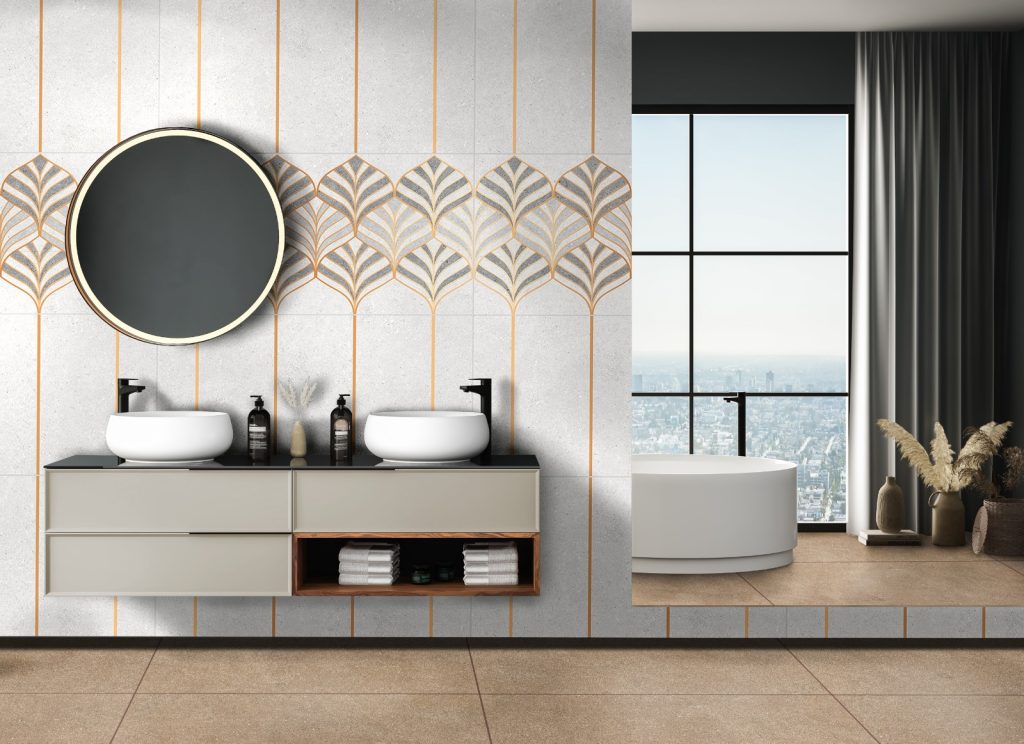Explore Thermal Conductivity in Tiles: What You Need to Know
Have you ever stepped barefoot on a cold tile floor and wondered why it feels so much cooler than other surfaces?
That’s magic, off the finger of thermal conductivity.
The thermal conductivity of tiles is one important determinant in their efficiency of transferring heat from a particular object. Comprehension of concepts about it may mean a lot while making huge difference in your room comforts be it in your living room or bedroom.

Below, we will take into consideration all the things you should know about thermal conductivity in tiles, their best choices for different rooms, and how they affect the temperature of your home.
What Is Thermal Conductivity in Tiles?
To put it simply, thermal conductivity is the capacity of a substance to conduct heat.
The higher the conductivity, the faster heat passes through the material. When it comes to tiles, this means that some will feel colder or warmer underfoot depending on how easily they conduct heat.
These materials are usually more thermally conductive compared to any other material, such as wood or carpet. Natural stone, ceramic, and porcelain tiles are ideal for the living room or bedroom, as the temperature needs to be controlled for comfortable living.
But it is not all about temperature; the optimal tiles regarding thermal conductivity will help in improving energy efficiency, especially when your home is designed with underfloor heating.
Why Does It Matter in Your Home?
It matters a lot, let’s dive into it.
Comfort in Living Rooms and Bedrooms
Whenever you think about the floor tiles for the living room then comfort should be considered.
The proper heat-conducting properties of the tiles would keep the room cool in summer and warm in winter. In underfloor heating systems, you will want tiles that offer high thermal conductivity because they let heat pass through more easily to spread the warmth quickly and evenly.
It happens with bedroom tiles the same way: comfort is crucial for restful sleep.
Nobody wants to get up from a warm bed and step onto an ice-cold floor in the morning. If you choose tiles with appropriate thermal properties, you will manage the temperature of your room much better without relying on heaters or air conditioning too much.
Factors That Influence Thermal Conductivity in Tiles
While thermal conductivity will vary with material, there is more to it in the way tiles can conduct heat.
Let’s go a little deeper into what those factors are and why they make a difference when it comes to choosing tile.
1. Material Composition
Different materials have distinct thermal conductive properties:
Ceramic and Porcelain Tiles: Since they have average thermal conductivity, these materials adapt well to varying temperatures.
Natural Stone Tiles: Stone, such as granite or marble, generally has higher conductivity, making it ideal for efficient heat transfer on heated floors.
Glass Tiles: Although not typically used for flooring, glass tiles usually have low thermal conductivity.
2. Thickness of Tile
Thicker tiles are more durable but usually have the lowest thermal conductivity compared to thinner ones.
That is an important factor when you incorporate an underfloor heating system since thinner tiles will allow rising heat more quickly.
3. Finishing & Glazing
The glazed or polished tiles will have a slightly lower thermal conductivity than the unglazed tiles.
These finishes are usually applied because they provide added protection and aesthetic appeal but, in general, the usage of both living room floor tiles and bedroom tiles is very across-the-board.
Comparing Thermal Conductivity Across Different Materials
The following table will give an approximation of the thermal conductivity of common tile materials for better understanding.
Tile Material | Thermal Conductivity (W/mK) | Best Used In |
1. Ceramic | 1.5 – 2.5 | Kitchens, Bathrooms, Living Rooms |
2. Porcelain | 1.5 – 2.5 | Living Rooms, Bedrooms, Outdoor Areas |
3. Natural Stone | 2.5 – 3.5 | Bedrooms, Underfloor Heating Systems |
4. Glass | 0.8 – 1.0 | Decorative Walls, Splashbacks |
Besides ensuring that the materials chosen for heating and cooling have the right thermal properties, it further allows one to have the perfect performance of heating or cooling in the home.
Choosing the Right Tiles for Specific Rooms
It matters most—just think: does a square fit in a circle? The answer is no. The same principle applies to tiles.
Living Room Tiles: A Warm Welcome
The comfort and energy efficiency of the living room are the most important concerns when choosing the right floor tiles.
For this particular room, tiles with high thermal conductivity are best, especially in cases where underfloor heating is being used. Ceramic and porcelain are great options for this area, as they’ll presumably bear the brunt of all your guests and family.
Natural stone, such as marble, can take durability with a luxurious feel; it is just more expensive.
Pro tip: Consider the tile’s tone and texture. Darker tiles tend to absorb heat well, so they work perfectly in colder climates, while lighter tiles reflect heat and keep your living room cool during summer.
The Impact of Tile Size on Thermal Conductivity
It’s not just the material that dictates thermal conductivity, but also, to some degree, the tile size.
For example, larger tiles reduce the number of grout lines, which allows the distribution of heat across a floor to be more effective. That could mean everything in maintaining an even temperature in your room.
Other, smaller tiles can allow for more grout lines and impede the clean line of heat.
They are more appropriate in areas where priorities are aesthetics and design elements rather than thermal performance.
Ready to Make Your Choice?
Now that you understand the role of thermal conductivity in tiles, it is time to make an informed decision for your home.
Be it renovating the floor tiles of your living room or just refreshing the tiles in your bedroom, the right decision may have long-lasting effects on comfort and energy efficiency.
Looking to explore options for your next renovation project?
Visit Regency Ceramics to discover a wide range of tiles designed for every need. From energy-efficient underfloor heating options to stylish designs, we’ve got you covered.
